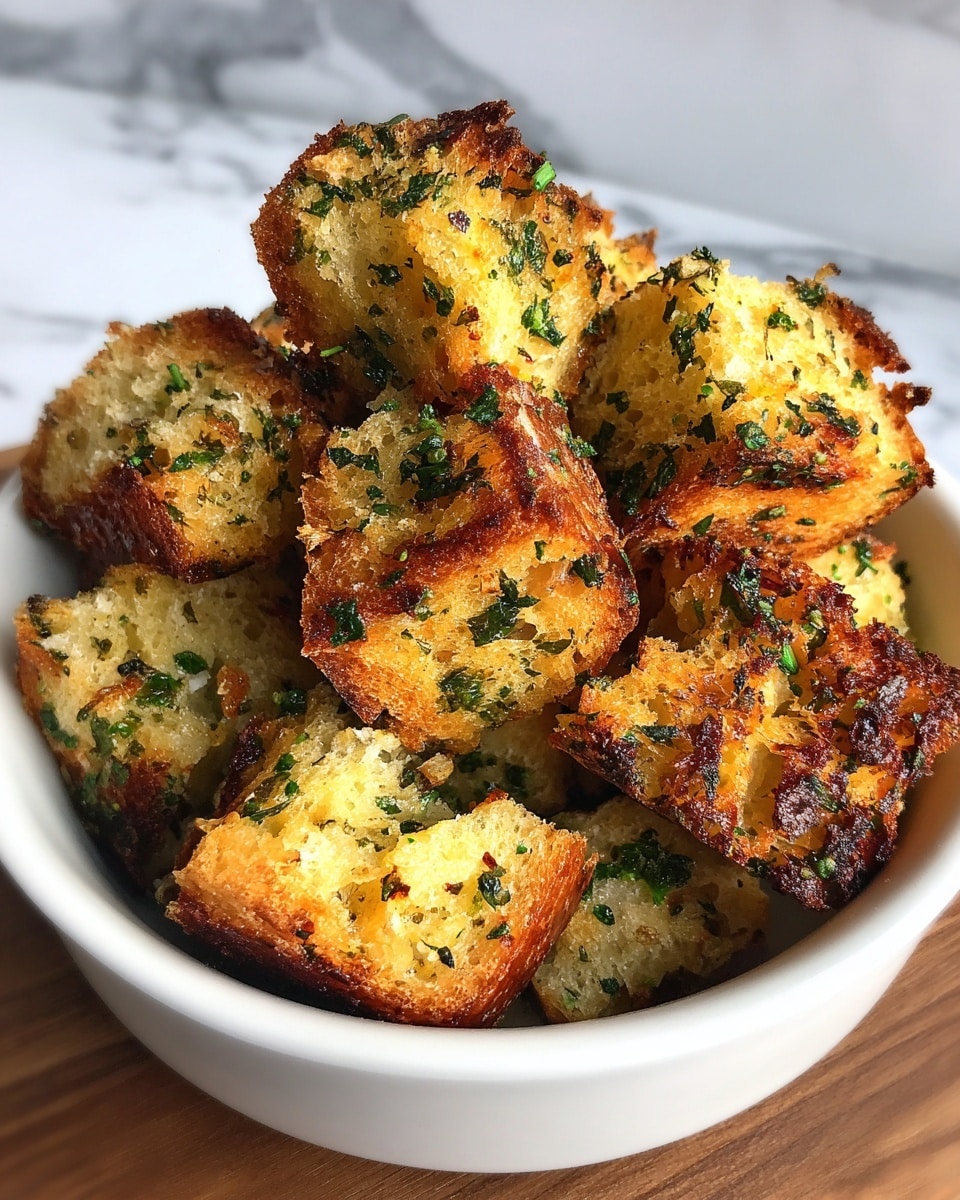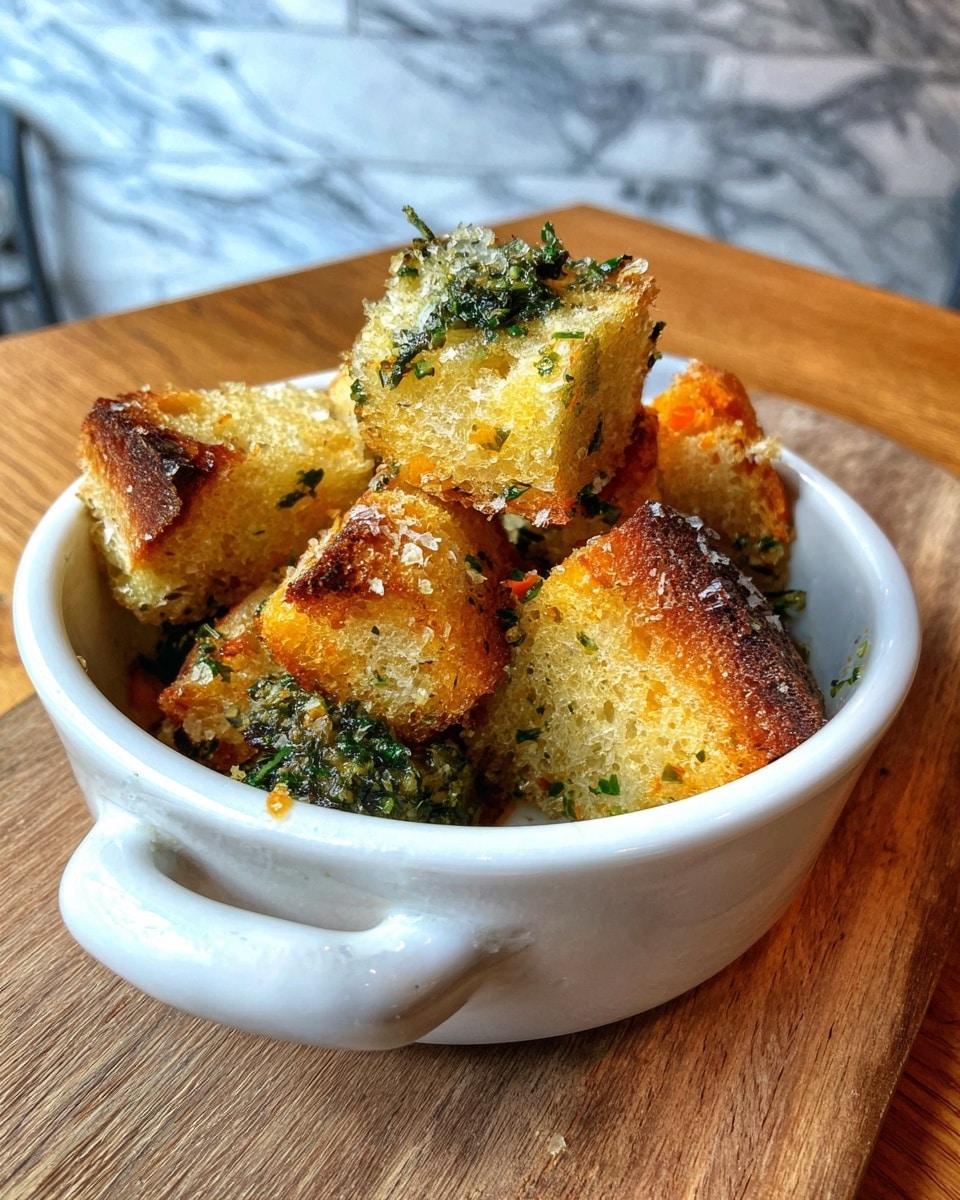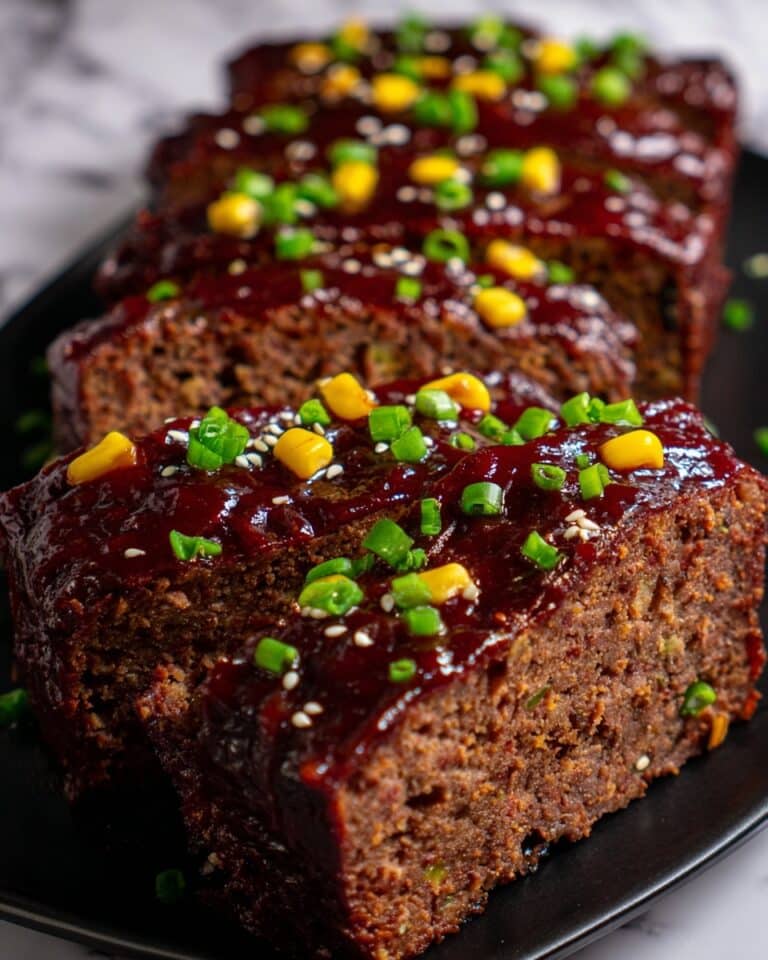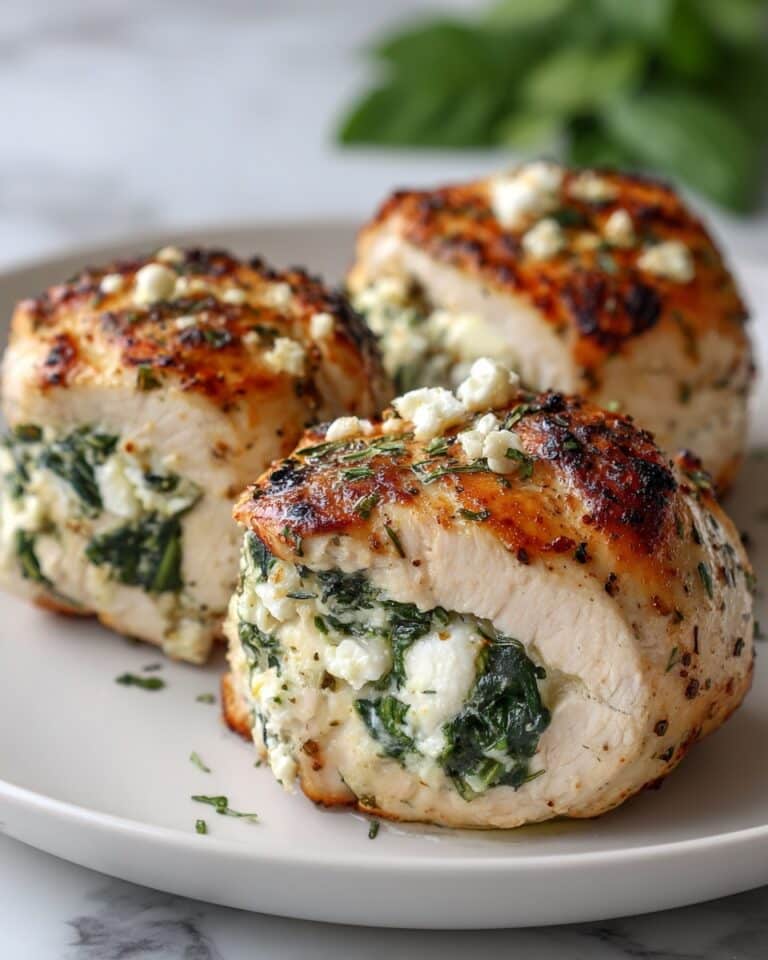Our Favorite Buttery Herb Stuffing Recipe
If you are on the hunt for a crowd-pleasing, soul-warming side dish, look no further than Our Favorite Buttery Herb Stuffing Recipe. This stuffing offers a perfect marriage of crisp-tender bread cubes enveloped in rich butter, fragrant fresh herbs, and softened vegetables, creating a delightful medley of textures and flavors. Whether it’s a festive holiday gathering, a cozy family dinner, or just a comforting weekday treat, this recipe brings nostalgia and joy to the table with every buttery bite.

Ingredients You’ll Need
Each ingredient in this recipe has a simple role, yet together they create a harmony of flavor, texture, and color. From the hearty bread cubes to the fresh, aromatic herbs, these essentials make the magic happen.
- 18–24 oz bread cubes: Choose stale or toasted sourdough, Italian, or your favorite bread combination that offers a sturdy base to soak up all the flavors without becoming mushy.
- 1 cup unsalted butter: This provides the luscious richness that coats every bread piece, giving the stuffing its classic buttery taste.
- 3 cups diced sweet onion: Adds a gentle sweetness and a tender bite that perfectly balances the earthiness of herbs.
- 2 cups diced celery: Offers a subtle crunch and fresh, green notes to keep the stuffing lively.
- 6 cloves garlic, minced: Brings depth and warmth to the overall flavor profile.
- Kosher salt and freshly ground black pepper: Essential for seasoning and enhancing all the ingredients’ natural flavors.
- 3 tbsp chopped fresh sage: A classic herb for stuffing that lends a wonderful piney, peppery aroma.
- 3 tbsp chopped fresh parsley: Adds brightness and a pop of color.
- 3 tbsp chopped fresh rosemary: Gives an earthy, pine-like flavor that complements the butter beautifully.
- 2 1/2 cups chicken or vegetable stock: Moistens the bread cubes and blends all flavors into one cohesive dish.
- 2 large eggs: Act as a binder to keep your stuffing perfectly set and not soggy.
- Fresh herbs (for garnish): Add a finishing touch of color and fresh scent.
How to Make Our Favorite Buttery Herb Stuffing Recipe
Step 1: Prepare the Bread Cubes
Start by cubing your choice of bread. If you’re using stale bread, simply cut it up and let it sit, loosely covered with foil overnight to dry out perfectly. For a quicker method, toast the cubes in a 350°F oven for about 15 minutes to get that ideal crisp but not too hard texture. This step is crucial because it ensures your stuffing won’t be soggy but will still absorb all the wonderful flavors.
Step 2: Preheat the Oven and Prepare the Baking Dish
Set your oven to 350°F and grease a 9×13-inch baking dish with melted butter, olive oil, or a nonstick spray. This prepping step prevents sticking and adds an extra buttery layer to the bottom of your stuffing.
Step 3: Cook the Vegetables and Herbs
In a large skillet or Dutch oven, melt the butter over medium heat. Add diced onions, celery, minced garlic, salt, and pepper, cooking for about 8–10 minutes until the vegetables soften and become fragrant. Stir in freshly chopped sage, parsley, and rosemary, allowing the herbs to toast lightly for about a minute. Then pour in 1 cup of your chosen stock and stir everything to meld the flavors together.
Step 4: Combine Ingredients
Place the bread cubes into your large mixing bowl or directly into the prepared baking dish. Pour the sautéed vegetable-herb mixture over the bread and toss gently to coat every cube evenly.
Step 5: Add the Egg Mixture
In a smaller bowl, whisk together the remaining 1 ½ cups of stock and the eggs. Pour this over the bread mixture and mix carefully to bind all elements without breaking the bread up too much. This step helps achieve that perfectly moist yet well-set stuffing texture.
Step 6: Bake to Perfection
Spread the mixture evenly in your greased baking dish and pop it in the oven uncovered. Bake for 45 to 50 minutes until the internal temperature hits 160°F, and the top gets beautifully golden. If the top browns too fast, tent a piece of foil loosely over the dish to protect it from overcooking.
Step 7: Garnish and Serve
Once baked, sprinkle your stuffing with fresh herbs for that final burst of aroma and color. Serve hot and enjoy the rich, comforting flavors of Our Favorite Buttery Herb Stuffing Recipe.
How to Serve Our Favorite Buttery Herb Stuffing Recipe

Garnishes
A simple sprinkle of freshly chopped parsley or a tiny drizzle of melted butter right before serving elevates the dish and makes it visually irresistible. Fresh herbs not only add color but also refresh the palate amid the richness.
Side Dishes
This buttery, herbaceous stuffing pairs beautifully with roasted turkey or chicken, inviting you to dive into a classic holiday plate. It also complements hearty mains like glazed ham or pork roast, adding a soft, flavorful contrast to roasted vegetables or a crisp green salad.
Creative Ways to Present
For a festive twist, try serving the stuffing in individual ramekins topped with fresh rosemary sprigs or bake it inside hollowed-out squash or bell peppers. This adds a rustic charm and allows for fun portioning that’ll wow your guests.
Make Ahead and Storage
Storing Leftovers
If you have leftovers, cool the stuffing completely, then store it in an airtight container in the refrigerator for up to 4 days. The flavors deepen overnight, making those next-day helpings just as delicious.
Freezing
You can freeze Our Favorite Buttery Herb Stuffing Recipe by placing cooled stuffing in a freezer-safe container or bag. Freeze for up to 3 months. Thaw overnight in the fridge before reheating to maintain the best texture and flavor.
Reheating
To reheat, cover the stuffing with foil and warm in a 350°F oven for 20 to 30 minutes until heated through. For a crispier top, remove the foil during the last 5 minutes of baking.
FAQs
Can I use gluten-free bread for this stuffing?
Absolutely! Using gluten-free bread cubes works well. Just make sure the bread is sturdy enough to hold the moisture without turning into mush, and toast them slightly for the best texture.
Is it necessary to use fresh herbs, or can I use dried herbs instead?
Fresh herbs are ideal because they provide bright, vibrant flavors and beautiful color, but if dried herbs are what you have, use about one-third of the amount and add them early when cooking the vegetables to help them bloom.
Can I make this stuffing vegetarian?
Yes! Simply use vegetable stock instead of chicken stock to make this recipe fully vegetarian without sacrificing any delicious flavor.
What if I don’t have time to let the bread cubes dry overnight?
No worries! Toasting the bread cubes in the oven for about 15 minutes creates the perfect texture quickly, so you can still enjoy great stuffing on tight schedules.
How do I know when the stuffing is fully cooked?
The stuffing should reach an internal temperature of 160°F to be safe and perfectly baked. The top should be golden brown and slightly crispy, giving way to a moist, flavorful interior.
Final Thoughts
There is truly something special about Our Favorite Buttery Herb Stuffing Recipe that makes every meal feel like a celebration. From the first buttery, herb-scented bite, you’ll understand why it’s become a beloved go-to recipe. Give it a try at your next gathering or anytime you crave some comforting deliciousness—you’ll be so glad you did!
Print
Our Favorite Buttery Herb Stuffing Recipe
- Total Time: 1 hour 35 minutes
- Yield: 8 servings 1x
- Diet: Halal
Description
Our Favorite Buttery Herb Stuffing is a classic, comforting side dish perfect for holiday meals or cozy family dinners. This recipe combines toasted bread cubes with sautéed onions, celery, garlic, and a fragrant blend of fresh sage, parsley, and rosemary, all moistened with rich chicken or vegetable stock and baked to golden perfection.
Ingredients
Bread
- 18–24 oz bread cubes (1.5 loaves, about 12–14 cups) – stale or toasted sourdough, Italian, or your favorite combination
Veggies & Herbs
- 3 cups diced sweet onion (approximately 2 large onions)
- 2 cups diced celery
- 6 cloves garlic, minced
- 3 tbsp chopped fresh sage
- 3 tbsp chopped fresh parsley
- 3 tbsp chopped fresh rosemary
Liquids & Others
- 1 cup unsalted butter
- 2 1/2 cups chicken or vegetable stock
- 2 large eggs
- Kosher salt and freshly ground black pepper (to taste)
- Fresh herbs (for garnish)
Instructions
- Prepare the Bread Cubes: For stale bread, cut into cubes and let sit overnight, loosely covered with foil. For toasted bread, preheat the oven to 350°F, spread bread cubes on a baking sheet, and toast for about 15 minutes until slightly crisp.
- Preheat the Oven: Set your oven to 350°F. Grease a 9×13-inch baking dish (or larger) with melted butter, olive oil, or nonstick spray.
- Cook the Vegetables: Heat butter in a large skillet or Dutch oven over medium heat. Add diced onions, celery, and minced garlic along with a generous pinch of kosher salt and freshly ground black pepper (about ½ to 1 teaspoon each). Cook, stirring occasionally, for 8–10 minutes until the vegetables are softened.
- Add Fresh Herbs and Stock: Stir in chopped fresh sage, parsley, and rosemary, cooking for 1 additional minute to release their aroma. Then add 1 cup of stock and stir to combine.
- Combine Stuffing Ingredients: Place the bread cubes in a large mixing bowl or directly into the prepared baking dish. Pour the vegetable and herb mixture over the bread cubes and toss gently to coat evenly.
- Prepare Egg Mixture: In a small bowl, whisk together the remaining 1 ½ cups of stock and the two large eggs. Pour this mixture over the bread cubes and vegetable mixture, stirring gently to ensure everything is evenly coated.
- Bake the Stuffing: Spread the mixture evenly in the prepared baking dish. Bake uncovered in the preheated oven for 45–50 minutes, or until the internal temperature reaches 160°F. If the top browns too quickly, tent loosely with foil to prevent burning.
- Garnish and Serve: Remove the stuffing from the oven, sprinkle with additional fresh herbs for garnish, and serve hot to enjoy the comforting and buttery flavors.
Notes
- Use stale or toasted bread to achieve the best texture; fresh bread can make the stuffing soggy.
- You can substitute vegetable stock for chicken stock to make this recipe vegetarian.
- Feel free to adjust the amount of fresh herbs according to your taste preferences.
- If desired, add cooked sausage or nuts for added texture and flavor.
- Leftover stuffing can be refrigerated for up to 3 days or frozen for up to 1 month; reheat thoroughly before serving.
- Prep Time: 25 minutes (includes bread toasting and vegetable prep)
- Cook Time: 1 hour 10 minutes (10 minutes sautéing + 50 minutes baking + 10 minutes buffer for toasting and combining)
- Category: Side Dish
- Method: Baking
- Cuisine: American






